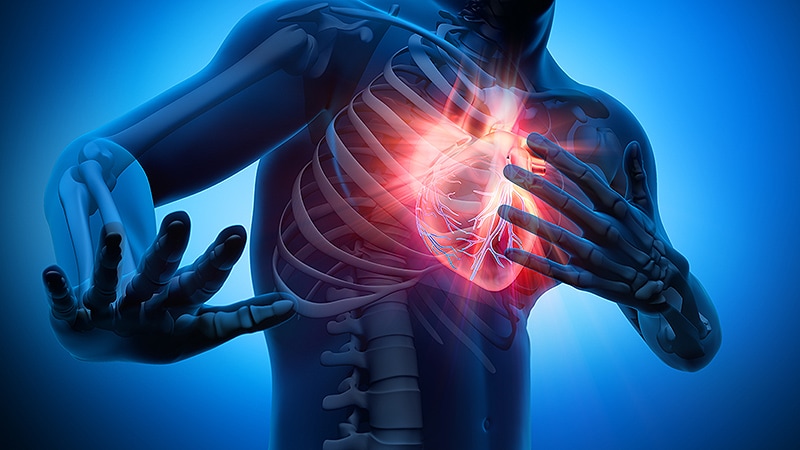
Dr Joseph Westaby
Obesity, in and of itself, and independent of other cardiovascular risk factors, may cause changes to the heart that can lead to sudden cardiac death, a new case-control study suggests.
Researchers who analyzed hearts taken at autopsy from people who had died from sudden cardiac death found that a number of the hearts obtained from obese decedents were heavier than those from normal weight decedents and that the hazard ratio of unexplained cardiomegaly in this cohort was 5.3 compared with normal weight individuals.
“Even when we ruled out any conditions that could potentially cause enlargement of the heart, including hypertension, heart valve problems, diabetes, and other cardiovascular risk factors, the association with obesity cardiomyopathy, or OCM, and sudden cardiac death remained,” lead author Joseph Westaby, PhD, from the Cardiac Risk in the Young (CRY) Cardiovascular Pathology Laboratories at St George’s University of London, UK, told theheart.org | Medscape Cardiology.
The study was published online July 28 in JACC: Advances.
Intrigued by this finding, Westaby and his group sought to characterize the clinical and pathological features of OCM associated with sudden cardiac death by comparing this population to two control groups: sudden cardiac death patients who were either obese or of normal weight, and had morphologically normal hearts.
Their group is uniquely positioned to do such research, Westaby explained.
“Here at St George’s University of London, we have a specialized cardiovascular pathology service, headed by Professor Mary Sheppard. All hearts obtained at autopsy from individuals who have died from sudden cardiac death, or who were suspected to have had a cardiovascular cause of death, anywhere in the UK, are referred to the CRY Centre for further analysis,” he said.
Patients were divided into two groups according to BMI: an obesity group (BMI > 30 kg/m2) and a normal weight group (BMI 18.5-24.9 kg/m2).
An increased heart weight above 550 g in men and 450 g in women in the absence of coronary artery disease, hypertension, diabetes, or valvular disease was classified as unexplained cardiomegaly, and individuals with obesity and cardiomegaly were defined as obesity cardiomyopathy.
Age- and sex-matched controls with obesity (n = 106) were selected based on a BMI > 30 kg/m2, with a morphologically normal heart weighing < 550 g in men and < 450 g in women.
Age- and sex-matched normal weight controls (n = 106) were selected based on a BMI of 18.5-24.9 kg/m2 and a morphologically normal heart weighing < 550 g in men and < 450 g in women.
The researchers identified 53 OCM cases from a cohort of more than 4500 sudden cardiac death cases that had BMI measurements. In normal weight patients, there were 14 cases of unexplained cardiomegaly.
The mean age at death of individuals with OCM was 42 years (range, 30-54 years). Most of the deaths occurred in men (n = 34, 64%), who also died younger than women (40 ± 13 years vs 45 ± 10 years; P = .036).
The average heart weight in OCM patients was 598 ± 93 g. Risk of sudden cardiac death increased when BMI reached 35 kg/m2.
Compared with matched controls, there were increases in right- and left-ventricular wall thickness (all P < .05) in OCM cases. Right ventricular epicardial fat was increased in OCM cases compared with normal weight controls only.
Left ventricular fibrosis was identified in seven (13%) OCM cases.
Role of Genetics to Be Explored
“This study highlights the need for further investigation into these individuals because, at the moment, we can’t be sure that the only contributing factor to this is the obesity,” said Westaby.
In the works are plans to see if there may be an underlying genetic predisposition in obese individuals that may have contributed to the development of an enlarged heart. The group also plans to study the families of the deceased individuals to determine if they are at risk of developing cardiomegaly, he said.

Dr Timothy P. Fitzgibbons
“This paper makes an important contribution to the literature that raises many important questions for future research,” writes Timothy P. Fitzgibbons, MD, PhD, from UMass Chan School of Medicine, Worcester, Massachusetts, in an accompanying editorial.
Being able to access so many autopsy samples gives the current study considerable heft, Fitzgibbons told theheart.org | Medscape Cardiology.
“A lot has been made of the obesity paradox and the perhaps benign nature of obesity but this paper suggests the opposite, that it is a very serious problem and can, in fact, in and of itself, cause heart abnormalities that could cause sudden death,” he noted.
The fact that only 13% of OCM cases had fibrosis on histology suggests that fibrosis was not the main cause of sudden cardiac death, he said.
“Often we will do MRIs to look for areas of fibrosis within the heart because those areas make patients prone to re-entry arrhythmias, in particular, ventricular tachycardia. But the authors suggest that the enlarged myocytes may themselves be predisposing to arrhythmias, rather than fibrosis,” Fitzgibbons said.
The study was supported by Cardiac Risk in the Young. Westaby and Fitzgibbons have reported no relevant financial relationships.
JACC Advances. Published online July 28, 2023. Abstract, Editorial
For more news, follow Medscape on Facebook, Twitter, Instagram, YouTube, and LinkedIn.
Source: Read Full Article
